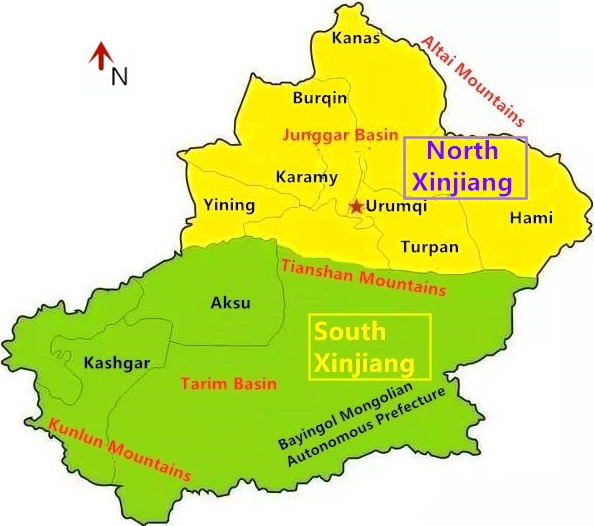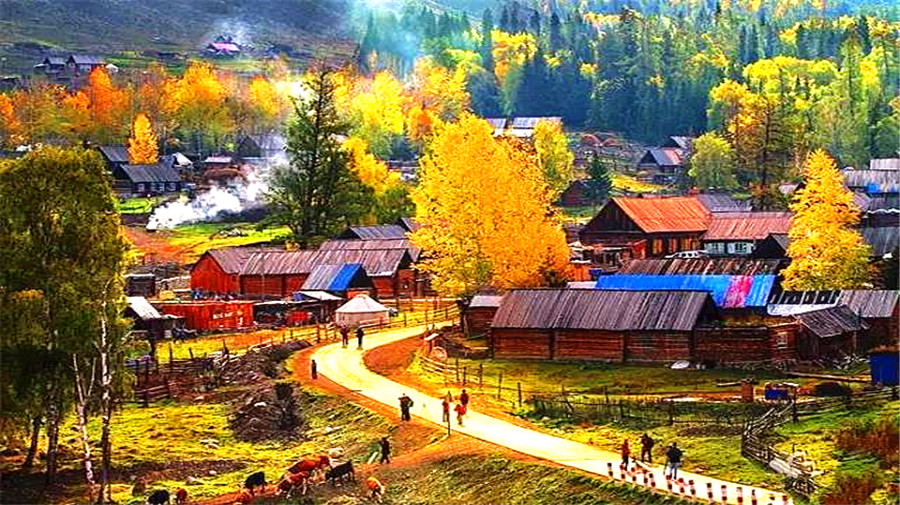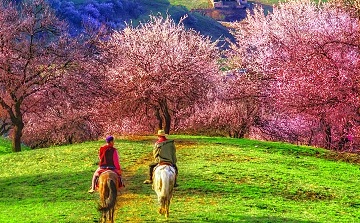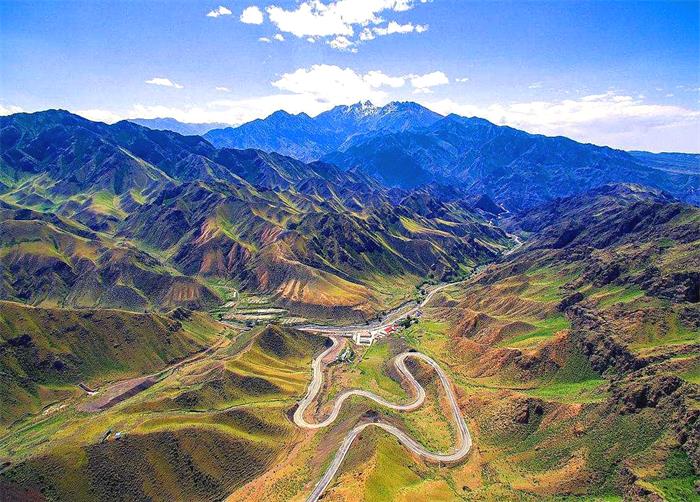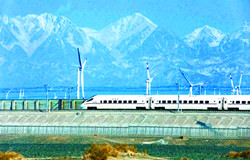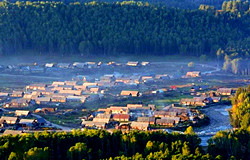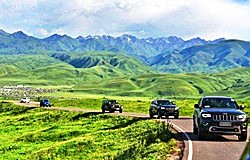Xinjiang Travel Guide
Xinjiang, located in northwest China, is the biggest province in China, covering an area of 1.66m sq km (almost accounts for 1/6 of China’s territory).In the hinterland of Eurasia, with a nearly 6000 km borderline, bordered by 8 countries, Xinjiang has formed its unique exotic culture and traditions.
Travel to Xinjiang, where you can explore the historical sites of the Silk Road and the colorful folklore of so many different minorities. The Silk Road played an important role in promoting the exchanges of material and spiritual civilization between the East and West. The long sections of the Silk Road running across Xinjiang make up a treasure house of relics known to the whole world with their frontier passes, ancient cities and castles, Buddhist caves and temples, courier stations, ancient Tombs, war-signaling stations, etc. Like strings of pearls that sparkle brilliantly and colorfully along the Ancient Road. Besides, local Xinjiang food is unique to the style of Central Asia, Turkey, and China.
Numerous stunning landscapes consisting of world-renowned large mountain ranges, glaciers, water systems, oases, prairies, and forests also attract thousands of travelers to come to visit. From the holy mountain of Tianshan to the vast grasslands of Naraty and Bayanbulak, from the great Taklamakan Desert to the grand Sayram Lake.
As the most professional inbound tour operator in Xinjiang, we have been devoted to Xinjiang travel for more than 20 years. Almost all the things you need to know before visiting Xinjiang can be found here.
Features
Chinese: 新疆 Xīnjiāng Area: 1,650,257 square kilometers
Time Zone: UTC+8 Population(2018): about 25,870,000
Location: Northwest China Climate: Temperate Continental Climate
Post Code: 830000-840000 Administration Type: Autonomous Region
Area Code: (+86) 0991-0909 Average annual rainfall: 166mm
Xinjiang Tourism Resources
Xinjiang is renowned for its beautiful scenery of desert, Gobi, snow mountain, lake, forest, grassland, rural village, etc.
Vast territory and abundant resources are the best portraits of Xinjiang. Meanwhile, the region is also the gathering place of many ethnic groups such as Uyghur, Khazak, and Tajik, to name just a few.
In Xinjiang, there is a mysterious Tianshan Mountain (天山), which divides this Autonomous Region into two parts - the north part and the south part. After a million years of evolution, the two parts have formed different landscapes.
Northern Xinjiang (北疆) is famous for its natural scenery. The famed cities include Urumqi (乌鲁木齐), Turpan (吐鲁番), Ili (伊犁), Altay (阿勒泰), Tacheng (塔城), Bortala (博尔塔拉), etc. Although the natural landscapes are too brilliant to let people ignore the rich culture in northern Xinjiang, you will still be amazed by the nomadic lifestyle of herdsmen there. Galloping horses on the grassland and singing songs aloud with dance. That is just the daily life of herdsmen.
Southern Xinjiang (南疆) is featured in historical relics and culture. Cities like Kashgar (喀什), Khotan (和田), Aksu (阿克苏), Bayingol (巴音郭楞), Kizilsu, and Kirgiz (克孜勒苏), as well as Kunlun Mountain (昆仑山), and Tarim Basin (塔里木盆地), all witnessed the vicissitude of Xinjiang in the past thousand years. When you come to southern Xinjiang, you will find the perfect combination of desert, Gobi, and oasis with the diversified agricultural civilization. Experience the rhythm of Uyghur Muqam (维吾尔木卡姆) in the local Uyghur family is enjoyable.
Xinjiang Tourism Attractions

1. Heavenly Lake - the Pearl of Tianshan Mountain.
With melted snow as its source, snow mountains surround the crystal-clear lake. The magnificent Bogda Peak mirrored the lake, making the whole scenery even more fascinating. Once arrive, you will feel like entering into a fairyland. The lake looks like a sapphire rimmed by diamond-like snow mountains.
2. Ili - The beauties of nature
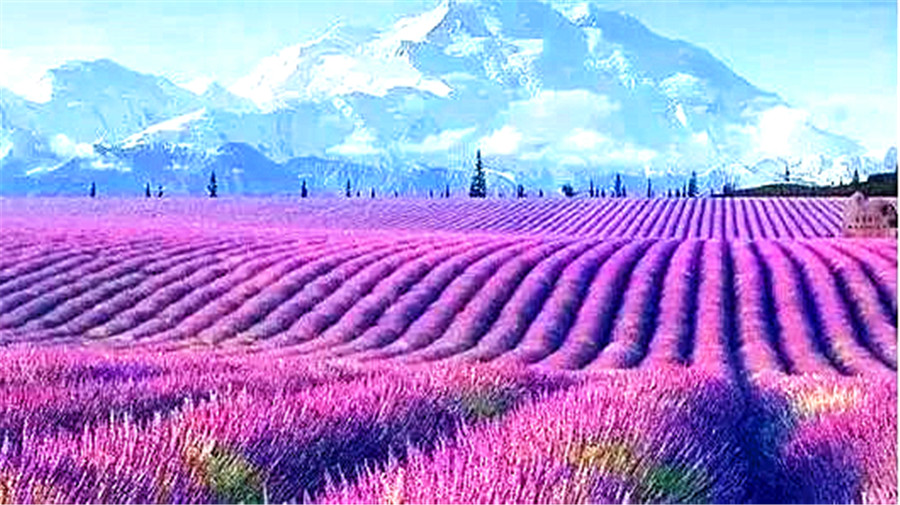
There is an old saying that we don't know how large China is until we reach Xinjiang; and we don't see the beauty of Xinjiang until we arrive at Ili. The scenery of Ili varies following the changing of seasons, which will surely fascinate you! Narati Grassland, Kalajun Praire, Huocheng Lavendor farm, and Xiata Valley are all the wonderful places dotted in the great Tianshan Mountain.

Naraty grassland stands as one of the four premier grasslands in the world, a sub-alpine meadow teeming with life. Renowned as a fertile pasture since antiquity, it boasts a tapestry of landscapes: flat river valleys, towering mountain peaks, deep gorges, verdant forests, and endless stretches of grassland. Fused with the rich Kazakh folk customs, Naraty has transformed into a multifaceted tourist destination, offering a blend of sightseeing, scientific exploration, leisurely pursuits, entertainment, summer vacations, and souvenir shopping.
4. Gobi Desert
In Xinjiang, when you are driving through the desert highways, the most impressive scenes must be the desert and Gobi desert. Empty your mind and let the desolate desert bring you into a world of infinity and endlessness.
5. Kanas Nature Reservation Park

It is listed as one of the best destinations for traveling in China for its picturesque landscape. It is the home of Siberian larches, spruces, firs and birches, snow leopards, stone marten, silver foxes, Altai Frogs, etc. Besides, the unique lifestyle of the local Tuwa people is also quite amazing. It is said that the Tuwa people are the offspring of the old, weak, sick, and disabled soldiers left by Genghis Khan when he led the troops for a westward expedition.
6. Sayram Lake

It is regarded as the last drop of tears of the Atlantic. Strolling around the lake and swimming in the sea of wildflowers, you will witness what is the "sayram blue". Every year from May to October, The sapphire water of the lake seems to meet the sky in the distance. The pasture is in a charming scene of flouring trees, waving grass, and wildflowers that are reflected in the clear water of the lake. You will have an unforgettable journey to have a night in the RV by the lakeside and ride a bicycle around the lake.
7. Karakul Lake and White Sand Lake along the Karakoram Highway.

Karakul Lake is on the lap of two giants, Muztagh Ata - "the father of ice mountains" and Kongur reputed for more avalanches. It is one of the rarely seen highland lakes in the world. On a fine day, you can get a nice view of Muztagh Ata, and the snow-capped peaks, flocks of animals, and grassland are all reflected in the water. By the lake, there are yurts and restaurants for tourists to stop and stay overnight. You can also visit the local Kizil people and experience their nomadic life.
8. Poplar Forest
In mid-October every year, you will have a chance to see the splendid golden poplar forest if you come to Xinjiang. In the desolate desert, almost no life can survive. Poplar trees create miracles that they not only survived but even formed continuous forests. We say that it is the spiritual symbol of the Xinjiang people.
......
In this vast expanse of wonders, Xinjiang holds countless treasures yet to be unveiled, inviting every traveler on a quest for adventure and discovery. May each journey to this majestic land fill your heart with joy and leave you with memories to cherish forever!
When Is the Best Time to Travel Xinjiang?
 Uyghur Performance
Uyghur Performance
The best time to travel Xinjiang is from April to November.
Depending on your preference, you will enjoy different scenes in different seasons and weathers. If you also love snowy days, then you will enjoy Xinjiang traveling all year round.
Travelers who come to Xinjiang for the first time may be confused about the weather in Xinjiang. For such a vast land, weather varies widely throughout the region. See more information in Xinjiang Weather.
Based on geographical features of Xinjiang and our experiences, the following information may help you better discover beautiful Xinjiang.
Spring:

From March to May. Air temperature rises rapidly in southern Xinjiang, while changes are not that dramatic in northern Xinjiang. So the flowering season in the north is longer than south while the blossom is earlier in the south. Lavender, rape flower field, apricot flower, and peach flower are competing for blossom everywhere.
Summer:
From June to August. It is the season when fruits and melons are ripe and fragrant. Although Xinjiang is also a bit hot and dry in summer, the weather in the mountain area is cool. For example, the Heavenly Lake is regarded as an excellent natural summer resort by the locals. Additionally, summer is also the golden season for sand therapy in Turpan and experiencing the prairie culture in Ili.
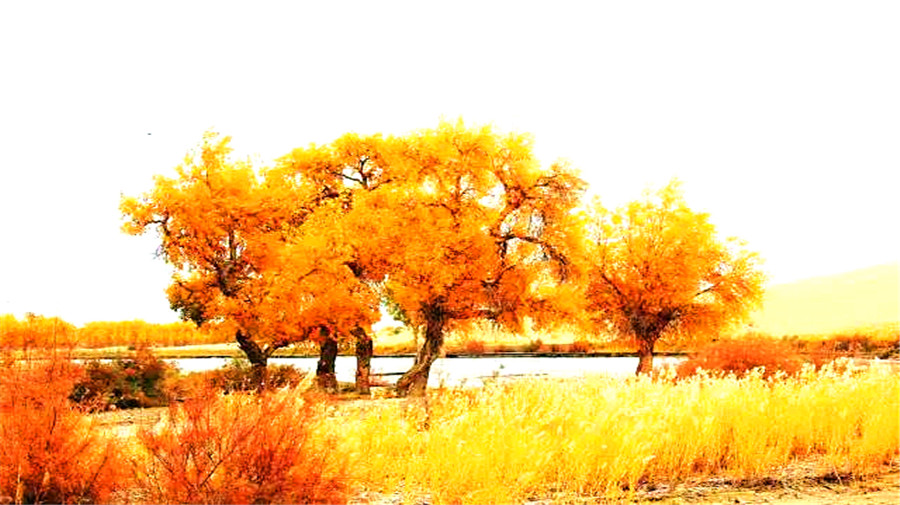
Autumn:
From September to November, it is a lovely season when the hot summer fades away, and the chill of winter has not yet arrived. The sky is clear, and the air is fresh, carrying a gentle breeze. This is the time for harvest, and you will taste the sweetest fruits and the best delicacies.
Winter:
From December to February of the following year, northern Xinjiang transforms into a dazzling ice and snow wonderland, making it a paradise for those who embrace the thrill of winter sports. Skiing, skating, and sledding – indulge in the sheer joy of experiencing this magnificent winter in Xinjiang!
Visit Xinjiang with Reliable Xinjiang Travel Agency
 Our Guests in Kashgar Id Kah Mosque
Our Guests in Kashgar Id Kah Mosque
Thanks to its large size, Xinjiang is not flooded by visitors even in the peak seasons compared to other travel destinations. You will not need to join a queue for entering the spots.
To better explore Xinjiang, choose a reliable travel agency will help you make your dream tour come ture.
We are here to provide you unforgettable tours! We have been devoted to the inbound tourism for more than 20 years, with 98% 5-star review on TripAdvisor.
We will provide you the best service and price to guarantee you a great Xinjiang holiday.






















